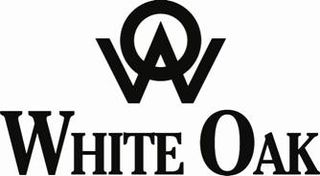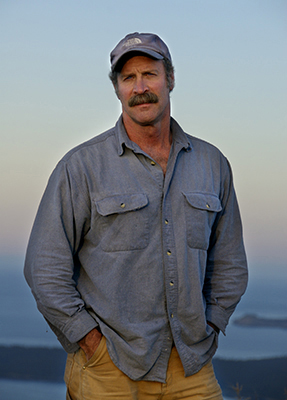
Wilderness or wildlands are natural environments on Earth that have not been significantly modified by human activity, or any nonurbanized land not under extensive agricultural cultivation. The term has traditionally referred to terrestrial environments, though growing attention is being placed on marine wilderness. Recent maps of wilderness suggest it covers roughly one-quarter of Earth's terrestrial surface, but is being rapidly degraded by human activity. Even less wilderness remains in the ocean, with only 13.2% free from intense human activity.

Ian Cedric Audley Player DMS was a South African international conservationist. Ian Player is one of the world’s outstanding conservationists and environmental statesmen. He earned his stripes in the rough and tumble era during which Africa’s protected areas were being created and tested. With his team, he also pioneered the saving of endangered species when they saved the white rhino from extinction.

The Wilderness Society is an American non-profit land conservation organization that is dedicated to protecting natural areas and federal public lands in the United States. They advocate for the designation of federal wilderness areas and other protective designations, such as for national monuments. They support balanced uses of public lands, and advocate for federal politicians to enact various land conservation and balanced land use proposals. The Wilderness Society also engages in a number of ancillary activities, including education and outreach, and hosts one of the most valuable collections of Ansel Adams photographs at their headquarters in Washington, D.C.

Ngamba Island Chimpanzee Sanctuary, is an island sanctuary in Uganda, dedicated to the care of orphaned eastern chimpanzees, that have been rescued by the Uganda Wildlife Authority. Many of the chimpanzees were rescued from poachers and are unlikely to survive reintroduction to the wild.

Cristina Goettsch Mittermeier is a Mexican photographer, conservationist, biologist, and author.
Maderas del Carmen is a biosphere reserve in the northern Mexican state of Coahuila.
Defying Ocean's End (DOE) is a global agenda for action in marine conservation compiled in a 2004 Island Press book. It is also the title of a 2003 Los Cabos (Mexico) conference, where the agenda was formulated.

Harvey Locke is a Canadian conservationist, writer, and photographer. He is a recognized global leader in the field of parks, wilderness, wildlife and large landscape conservation. He is a founder of the Yellowstone to Yukon Conservation Initiative, with the goal to create a continuous corridor for wildlife from Yellowstone National Park in the United States to the Yukon in Northern Canada. In 2017, Locke was appointed chair of the IUCN World Commission on Protected Areas Beyond the Aichi Targets Task Force, with the goal of ensuring the new global conservation targets set at the next Conference of the Parties of the Convention on Biological Diversity in 2020 are meaningful for achieving the conservation of nature and halting of biodiversity loss.

Conservation photography is the active use of the photographic process and its products, within the parameters of photojournalism, to advocate for conservation outcomes.

The International Conservation Caucus Foundation (ICCF) is a non-partisan 501(c)(3) educational foundation based in Washington, D.C. ICCF's stated mission is "to advance U.S. leadership in international conservation through public and private partnerships and to develop the next generation of conservation leaders in the U.S. Congress."
The Wildlife Conservation Network (WCN) is a United States-based 501(c)(3) non-profit organization that protects endangered wildlife by supporting conservationists in the field who promote coexistence between wildlife and people. WCN does this by providing its partners with capital, strategic capacity-building services, training, and operational support. WCN has been given a top rating amongst wildlife conservation charities, with a four star rating on Charity Navigator.

The Sierra del Carmen, also called the Sierra Maderas del Carmen, is a northern finger of the Sierra Madre Oriental in the state of Coahuila, Mexico. The Sierra begins at the Rio Grande at Big Bend National Park and extends southeast for about 72 kilometres (45 mi), reaching a maximum elevation of 2,720 metres (8,920 ft). Part of the Sierra del Carmen is protected in the Maderas del Carmen Biosphere Reserve as part of a bi-national effort to conserve a large portion of the Chihuahua Desert in Mexico and Texas.

Vance G. Martin is an expert in international nature conservation and wilderness protection, and a writer. Martin specializes in bridging the interests of people and nature through culture, communications, science, and policy. He has worked and lived in many countries, 75 or more, and served on the boards of numerous conservation and business organizations. He founded, and from 1984 through 2022, served as President of the WILD Foundation, an international conservation organization explicitly dedicated to protecting wilderness, connecting wild nature to people, and to communicating the values of wilderness and its benefits for human communities. He currently works through Wilderness Foundation Global, an international alliance based in the Global South that he co-founded in 2016. He is based in Boulder, Colorado (USA).

White Oak Conservation, which is part of Walter Conservation, is a 17,000-acre (6,900 ha) conservation center in northeastern Florida. It has long been dedicated to the conservation and care of endangered and threatened species, including rhinoceros, okapi, bongo antelope, zebras, dama gazelles, and cheetahs.

Carr Clifton is a local American landscape, nature and wilderness photographer. A native Californian living in the northern Sierra Nevada near Taylorsville, California, Carr began photographing and color printing professionally in 1979 after seeking advice and inspiration from his mentor and neighbor, pioneering 20th century master landscape and conservation photographer Philip Hyde. Credits include a US Postal Service stamp of Acadia National Park and numerous exhibit format books. Clifton has spent thirty-five years exploring and documenting endangered, wild landscapes, creating an immense body of work with a large format 4x5 film camera, and more recently a digital camera.
The Janos Biosphere Reserve is a nature reserve in Janos, Chihuahua, Mexico. It protects a prairie ecosystem best known for its recovering and reintroduced species most notably the herd of American bison which became the first re-established in Mexico. It is the first federally protected area of Mexico with the main objective of protecting a grassland ecosystem.

The Mexico-United States international park, also known as El Carmen Big Bend Complex, is a proposed transboundary protected area straddling the part of the U.S.–Mexico boundary delineated by the Rio Grande. Proposed by U.S. President Franklin Delano Roosevelt to Mexican President Manuel Ávila Camacho in 1944, the goal remains unfulfilled. The proposed bi-national park is along a 268 mile stretch of the river, which is approximately 14% of the border between Mexico and the United States. It consists of 3 protected areas and parks in Texas and 4 in Mexico, which include Big Bend National Park, the Maderas del Carmen, Ocampo, and Cañón de Santa Elena flora and fauna protection areas, Monumento Río Bravo del Norte, Big Bend Ranch State Park, and Black Gap Management Wildlife Area. As it is a region of protected areas and parks, the El Carmen Big Bend Complex area is the habitat for many types of birds, mammals, plants, and insects. Due to this, the area is a prime spot for ecotourism for both the United States and Mexico along the border. Recent issues of increased border security and environmental concerns have emphasized the need for reopening the discussion, which is currently led by organizations such as the National Park Service in Big Bend National Park, the Sierra Club, and Rotary International.












